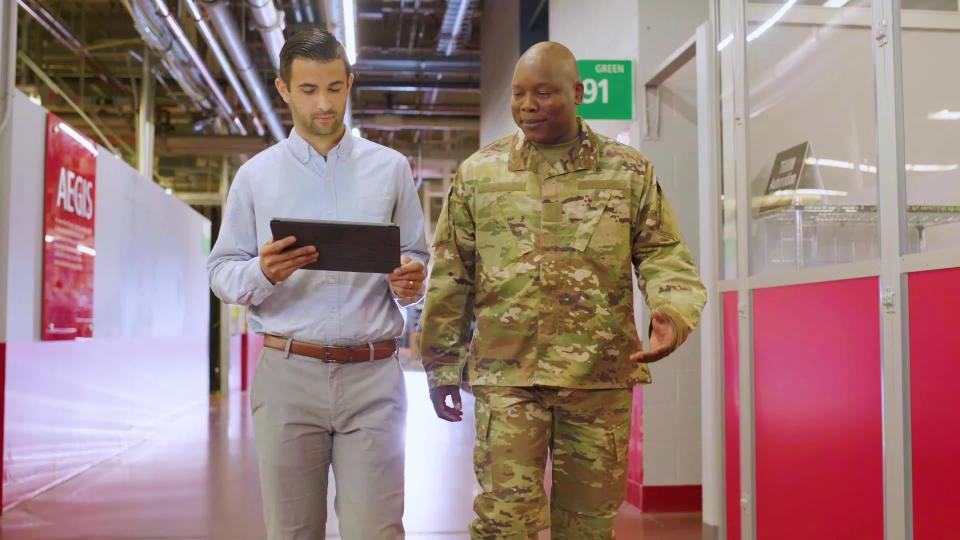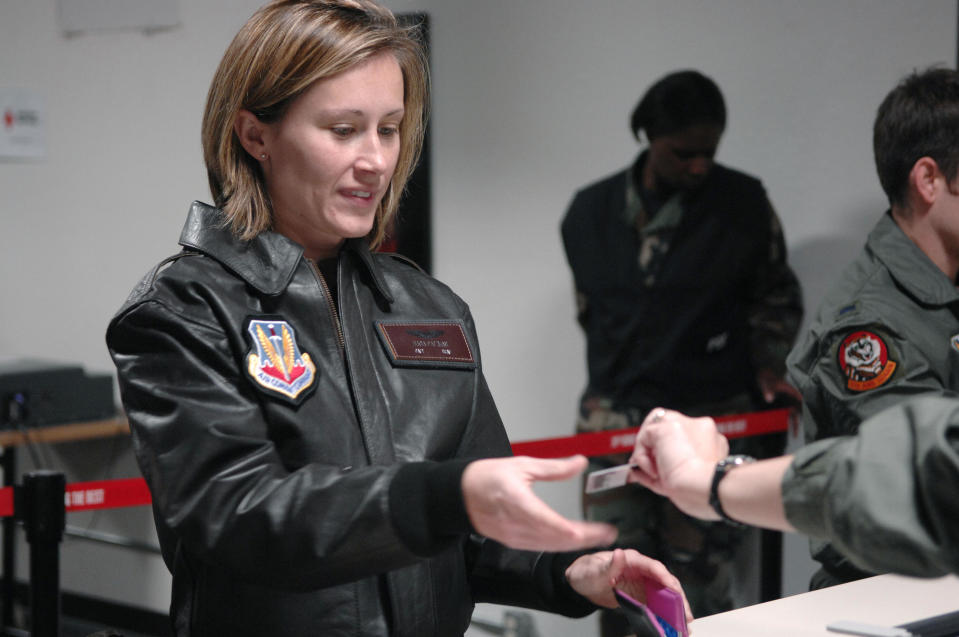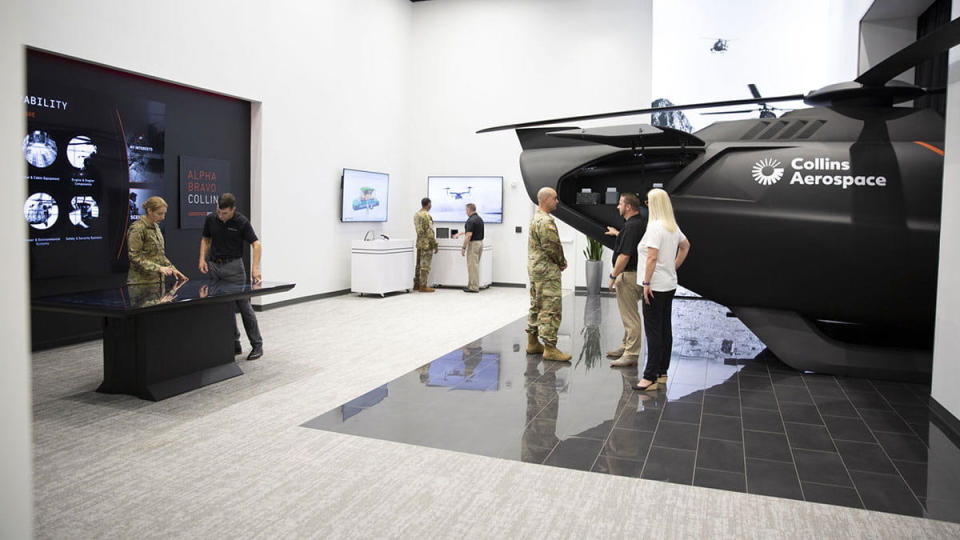How ex-military personnel make RTX better
Military veterans are more than just part of the culture at RTX. One might even say they're part of the company's products and services.
Across RTX businesses, former soldiers, sailors, airmen, and marines – including some who still serve as reservists – work in factories, travel to test sites, and embed on military installations around the world, drawing from their unique experiences and collaborating with colleagues toward a common goal: to produce the technology customers rely on to meet their missions.
Here are some of the ways that the 15,000 military veterans who work at RTX inform every aspect of their work, from engineering and design, all the way to testing, deployment, and sustainment.

Veterans bring a team mentality
The U.S. Army taught Mike Tax the importance of teamwork.
Today, working on the teams that develop commercial space suits and astronaut life-support systems, he sees the value of that mindset every time there's a task to complete, a coworker to help or a deadline to meet.
"As a veteran, the biggest thing is being a good team member," said Tax, a senior manager in mission systems business development at Collins Aerospace, an RTX business. "When we were deploying, you were part of a team, and that really was life and death, so you build a really good bond with those people. You work with people from all different walks of life and come together to achieve a common goal. I'm grateful to be part of a team at RTX that is working toward a common goal: products that are safe and reliable, so we can put humans into space."
Veterans are experts in communicating with military customers
Veterans often serve as in-house experts on what military customers need, and they excel at communicating the benefits of a technology clearly, directly and in the right vernacular.
"Rather than 'it has this many microns, and its range is this,' with wires and washers and all those things that are technical, I create a tactical vignette," said Tommy Boccardi, a retired U.S. Army Ranger who now works at Raytheon. "The value of doing that is they can quickly conceptualize where it fits in the organization."
A big part of his job is to listen. Boccardi did that with a group of young soldiers who met him at a test range to try out the new command launch unit for the Javelin Weapon System, an anti-tank guided munition. Over their customary breakfast of Doritos and energy drinks, and after an enthusiastic first reaction, Boccardi asked them: what do we have to fix?
"Sir, you've got to change the zoom," Boccardi remembers one soldier saying, in reference to the controls for the weapon's sights. "In and out has to be up and down. Just like a game controller. Just like you're playing Xbox. Up is always zoom in. Down is zoom out. It's intuitive."
Boccardi wrote it up in his report. It was an easy fix, and the team made it quickly.
Veterans are excellent planners
Twelve years in the U.S. Air Force taught Alicia Datzman to plan and pull off a mission. Datzman, a former B-1 Lancer pilot, was also a scheduler – a role that required solving problems, factoring in variables and working around complications.
"I love it, but I love Sudoku. I love solving the jigsaw puzzle," said Datzman, who now works in strategy for Collins Aerospace, an RTX business.
In the Air Force, scheduling meant figuring out what kind of crew she would need – how many, how experienced, how rested they would be at the time, as well as how long they would need to refuel and reload.
For her job at Collins' Mission Systems business, it's meant reading documents such as OV-1s – static diagrams of missions and military concepts – and working with colleagues to envision in living detail all those aircraft, ships and ground vehicles in action.
Datzman's time in the Air Force, and specifically, her studies at its Weapons School, also taught her how to deal with disagreement productively.
"I have a healthy relationship with conflict," Datzman said. "When you get a bunch of Weapons School grads in a room, they're going to disagree with each other, but something good is going to come out of that room."

Brandi Carlton had a similar transition from the Army, where she served seven years and worked as a logistics officer, coordinating resources so operational teams could succeed on their missions.
Carlton, who joined RTX in 2022, now works with teams across the company to support commercial airline customers on matters such as invoicing, shipping, quality, claims and accounts receivable. She often uses the problem-solving skills she honed in the service.
"I never know what problems are going to arise or who I will need to coordinate with, so I really have to think on my feet and problem solve, take a step back and analyze: how do I empower our team to fix this issue and get the customer what they need?" said Carlton, a senior regional account representative at Collins Aerospace.
"My military experience has definitely helped me excel in my role," she said. "It has provided me the skills needed to be flexible, resourceful and adaptable – especially working remotely – being self-sufficient and taking accountability for my duties."

The engineering process is geared toward meeting technical requirements and specifications. Veterans add to that by bringing what's known as conops – concept of operations, the military term for thinking about a system from the perspective of the people who will use it.
"(Engineers) are dealing with equations and numbers, pencil and paper," said Brooks "Finch" Cleveland, a former U.S. Navy pilot who now works as an aviation adviser at Raytheon, an RTX business. "We come in and say, 'That's fantastic, now let me throw a wrench in it.'"
Case in point: the system Cleveland works with most closely – JPALS, or the Joint Precision Approach and Landing System. It started as a tool to land fighter jets on aircraft carriers in poor flight conditions. Now it's being adapted to help pilots touch down anywhere in the world.
For Cleveland, who flew F/A-18s in the Navy, thinking about conops means coming up with scenarios like landing in harsh weather or on challenging terrain or having to set up and move the system quickly to avoid a counterattack.
"We throw in variables that the real world will throw in," he said. "We give them all these fantastical ideas, and they somehow figure out how to make it a reality."
Social Security Administration updates overpayment policy | 60 Minutes

